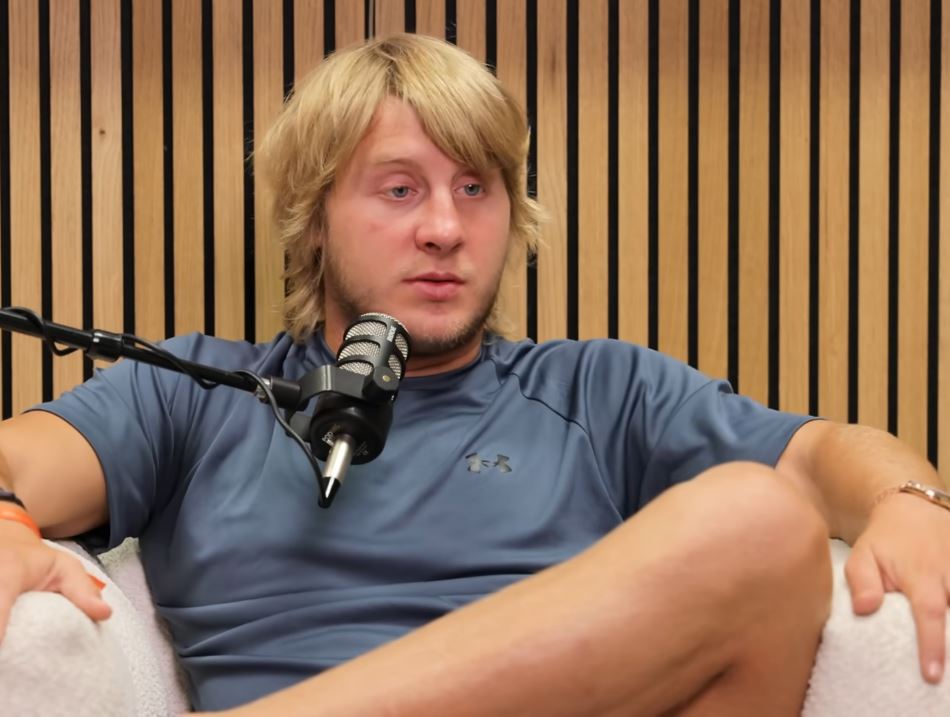Paddy Pimblett is one of the few fighters who has sparked as much discussion about weight. His dramatic weight swings over the past year—from 155 pounds during fight week to almost 198 pounds a few days later—have sparked conversations in gyms, on sports talk shows, and on fan forums. Paddy’s open demeanor and self-assured smile have made him a representation of charisma and concern.
Paddy stunned spectators with his performance at UFC 314 by TKOing Michael Chandler in the third round. However, he had reportedly gained forty-three pounds and was nearly unrecognizable just a week later. The change was so drastic that even experienced analysts, such as Chael Sonnen, called it “dangerous and unnecessary.” For Paddy, however, it appeared to be routine.
Paddy Pimblett Personal and Professional Info
| Name | Paddy Pimblett |
|---|---|
| Real Name | Patrick Mark Pimblett |
| Nickname | The Baddy |
| Date of Birth | January 3, 1995 |
| Age | 30 |
| Height | 5 ft 10 in (178 cm) |
| Fighting Weight | 155 lbs (70 kg) – Lightweight Division |
| Off-Season Weight | Up to 198 lbs (90 kg) |
| Fighting Style | Brazilian Jiu-Jitsu (2nd-degree black belt) |
| Team | Next Generation MMA, Liverpool |
| MMA Record | 23 Wins – 3 Losses |
| Notable Wins | Michael Chandler, Tony Ferguson |
| Spouse | Laura Gregory (m. 2023) |
| Rank (as of Jul 2025) | #10 Lightweight in UFC |
Paddy has made weight gain his trademark by candidly and almost humorously documenting his post-fight indulgences. He uploads videos of himself consuming army-sized portions of English breakfasts and desserts. His fan base has grown significantly as a result of his vlogs, which have made every upswing into a highly anticipated episode.
While weight loss is common in professional mixed martial arts, few people engage in it as publicly or aggressively. Known for their year-round discipline, fighters like Dustin Poirier and Michael Chandler maintain a close relationship with fighting weight. This enables their camps to concentrate on endurance and skill. Paddy, however, views the weight loss as a last resort rather than a component of everyday self-control.
Experts voice valid concerns despite the fact that his results speak for themselves. Paddy runs the risk of developing long-term health issues as a result of his rapid weight gain and loss. Recurrent drastic changes can lead to significant reductions in cardiovascular endurance, hormone balance, and kidney function. Paddy continues to speak out in spite of this, claiming that health warnings are “overblown.”
Fans particularly respect his candor. Paddy shows off his indulgences in a culture that tends to conceal them. He has proudly declared that he wants to enjoy life in between fights and advises younger fans not to get fixated on six-pack abs. His viewpoint has been especially helpful for athletes who struggle with body image. Resilience and transparency are evident in his story.
Paddy has significantly increased his marketability by owning up to his shortcomings and turning criticism into material. His commercial viability is demonstrated by his endorsement deals, which include a seven-figure deal with Barstool Sports. He used a triangle choke to defeat King Green at UFC 304, a finish that went viral on social media.
His success is particularly remarkable because he performs well inside the cage. Winning bouts, such as those against Jared Gordon and Tony Ferguson, deter critics. But there are still whispers of uncertainty. Can Paddy bounce between weight extremes and still perform well? The answer seems to be yes for the time being.
Paddy has reshaped the fighter image with his unreserved storytelling and strategic branding. He leans toward relatability rather than perfection. His stomach softens. He fills out his face. He also owns it. It’s surprisingly inexpensive in terms of emotional currency, which is uncommon in a field where appearances are everything.
Days after his altercation, Paddy made a joke about looking “like a melted candle” at a recent press conference. He still grinned with pride, adding that he could return to his former self as “The Baddy” once it was time to lock in. His signature has become that mental and physical metamorphosis.
For aspiring fighters, Paddy poses a special conundrum. His model promotes both performance and personality in a very flexible way. However, his course might not be viable. Coaches like Firas Zahabi have drawn attention to the risks associated with such drastic changes, likening them to punch-based yo-yo dieting.
Paddy’s performances haven’t decreased, though. They have actually been much sharper in their execution and much faster in pace. Even critics nodded grudgingly in admiration of Michael Chandler’s timing and control, which were remarkably evident. He is protected from criticism by these outcomes—for the time being, at least.
Paddy has evolved into more than just a fighter by incorporating personality into every facet of his public life. In addition to being a brand and a storyteller, he strangely promotes self-acceptance. Paddy reminds us that happiness and achievement can coexist with imperfections in a sport that is dominated by aesthetics.



